1. A High, Stiffly Wagging Tail Signals Confidence—Or a Warning
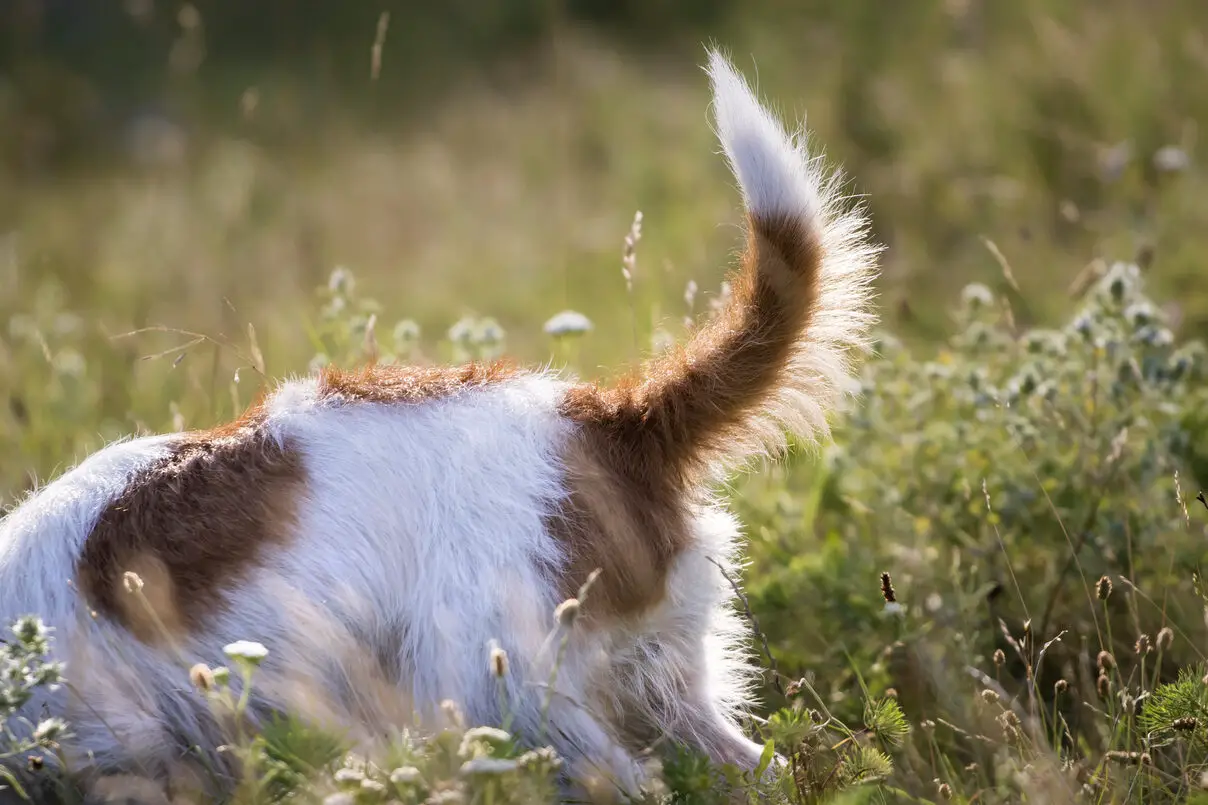
When a dog holds its tail high and wags it in a stiff, deliberate motion, it often indicates confidence, dominance, or heightened alertness, according to Whole Dog Journal. This is commonly seen in breeds that have naturally high-set tails, such as Akitas, German Shepherds, and Malamutes. A dog may adopt this posture when encountering something new, investigating a strange noise, or assessing another dog in the area. If the wag is quick and controlled, the dog is likely asserting itself, letting others know they are aware of their surroundings and in control.
However, a high, stiff wag can also be a warning. When combined with a rigid body posture, raised hackles, or direct staring, this tail movement may signal that the dog is on edge and could react defensively if provoked. Many dog owners mistake this for excitement, only to be surprised when the dog suddenly growls or snaps. It’s important to read the entire body language—if the dog is stiff and unblinking, it’s best to approach cautiously or give them space. A confident tail wag doesn’t always mean friendliness; sometimes, it’s a sign that the dog is ready to stand its ground.
2. A Low, Slow Wag Suggests Uncertainty or Fear
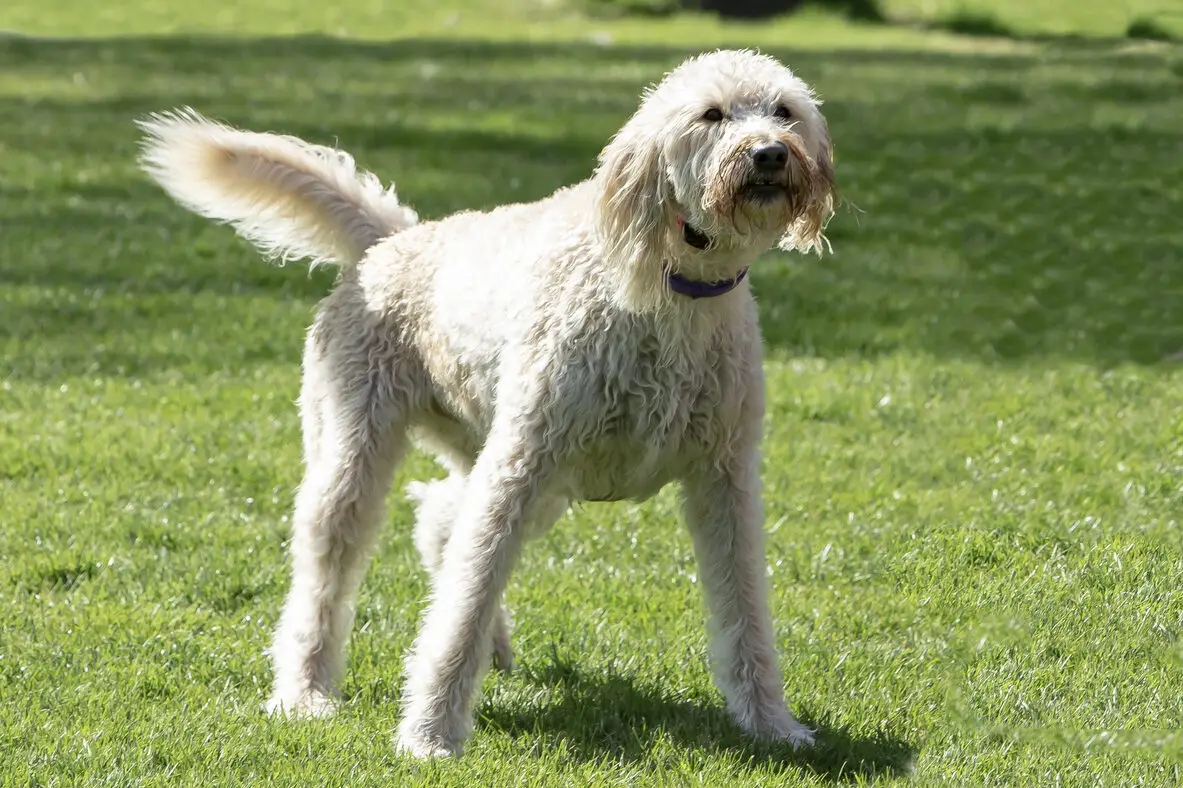
Unlike the broad, enthusiastic wag of a happy dog, a slow-moving, low-held wag is usually a sign of uncertainty or nervousness. This is often seen in dogs that feel unsure about a situation, such as meeting new people, encountering an unfamiliar environment, or sensing tension in the household. The slow wag suggests that the dog is processing the situation, trying to decide whether they should feel safe or remain on guard. Many rescue dogs, especially those with past trauma, exhibit this type of tail movement when interacting with strangers.
A dog displaying this kind of wag may also have their ears pinned back, their head slightly lowered, and their body angled sideways rather than facing forward directly. This is a classic submissive signal, showing that the dog is not looking for a confrontation but still feels uneasy. If you notice this behavior in your dog, it’s best to give them time and space to adjust. Using a calm voice, avoiding sudden movements, and letting the dog approach on their own terms can help them feel more comfortable. The key is patience—forcing interaction when a dog’s tail signals hesitation can increase their anxiety.
3. A Fast, Full-Body Wag Means Pure Joy and Excitement
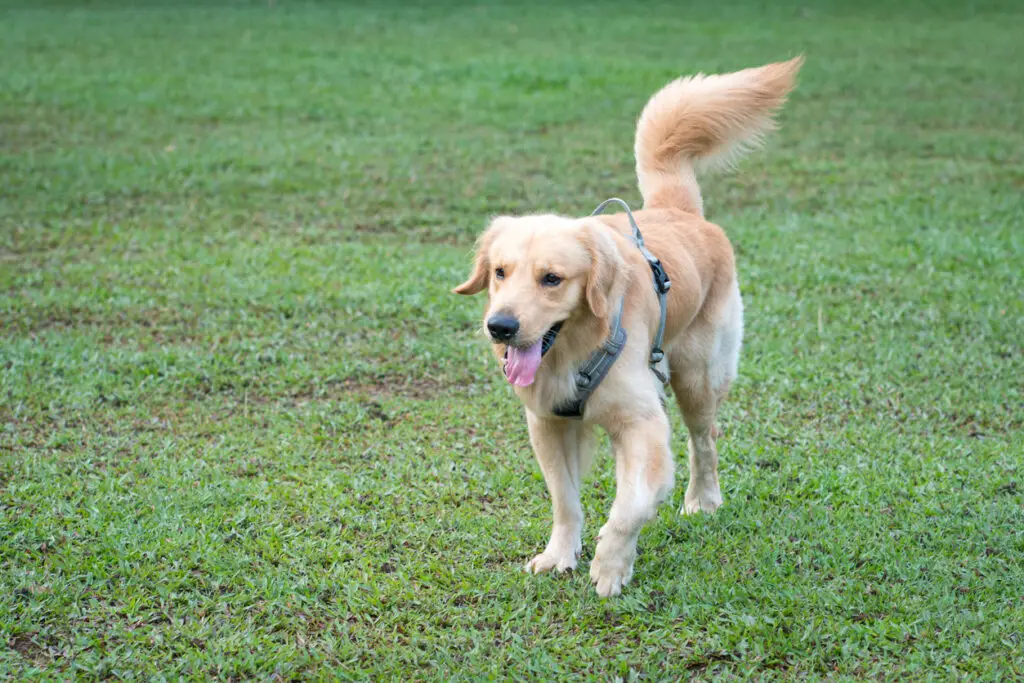
When a dog wags its tail rapidly and broadly—sometimes moving its entire backside along with it—it’s a clear sign of happiness and excitement. This is the kind of wag that happens when you come home after a long day, grab the leash for a walk, or bring out their favorite toy. Some dogs, particularly social breeds like Golden Retrievers and Beagles wag so enthusiastically that their whole body wiggles from side to side.
This type of wag is almost always a positive sign, especially when paired with other relaxed body language, like an open mouth, soft eyes, and playful jumps. It’s an invitation for interaction—your dog is telling you they’re in a great mood and ready for fun. However, extreme excitement can sometimes lead to overly exuberant behaviors like jumping up on people or play-biting. While this is usually harmless, training your dog to settle down before greeting people can prevent accidental roughness, especially with children or elderly individuals.
4. A Slight, Gentle Wag Means Curiosity or Uncertainty
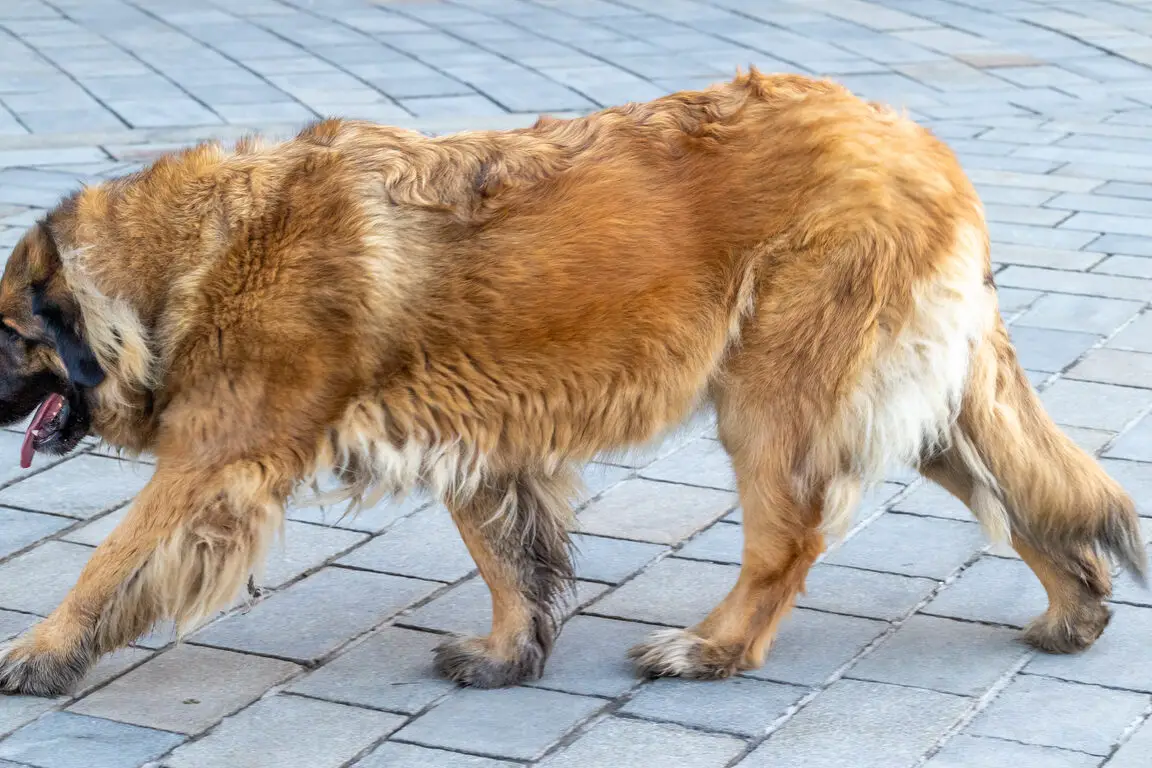
A dog that is gently wagging its tail in small, subtle movements is usually feeling curious or slightly cautious. This is commonly seen when a dog is encountering something unfamiliar but not necessarily threatening, such as a new object, sound, or person. The tail movement suggests that the dog is interested but still assessing whether they should feel comfortable. According to I Heart Dogs, their body may remain still while only the tail moves slightly, showing a level of hesitation.
For example, if you bring home a new piece of furniture, your dog may stand at a distance, watching it with a slight tail wag as they sniff the air. This same movement is often seen when a dog meets a stranger for the first time—they may wag slightly while observing the person’s body language before deciding to approach. If the situation remains positive, the tail wag will often become broader and faster as the dog grows more comfortable. However, if they sense something off, the tail may lower or stop moving altogether.
5. A Tucked Tail Indicates Fear or Submission

When a dog tucks its tail tightly between its legs, it’s a clear sign of fear, submission, or extreme discomfort. This position is often accompanied by a lowered head, flattened ears, and cowering stance. Dogs in this state are trying to make themselves appear smaller, signaling that they feel intimidated or unsafe, according to Dogs Academy. This is a common response to scolding, loud noises, or unfamiliar situations that make the dog feel vulnerable.
Some dogs naturally carry their tails lower, but if a normally confident dog suddenly tucks its tail, it’s important to assess the situation. Are they in an environment that feels threatening? Did someone raise their voice or make an intimidating gesture? Recognizing this body language is crucial because a fearful dog, if pushed too far, may resort to defensive behaviors like growling or biting. The best response is to remove any stressors and offer calm reassurance, allowing the dog to regain confidence on their own.
6. A Rigid, Upright Tail Without Wagging Signals Alertness or Potential Aggression
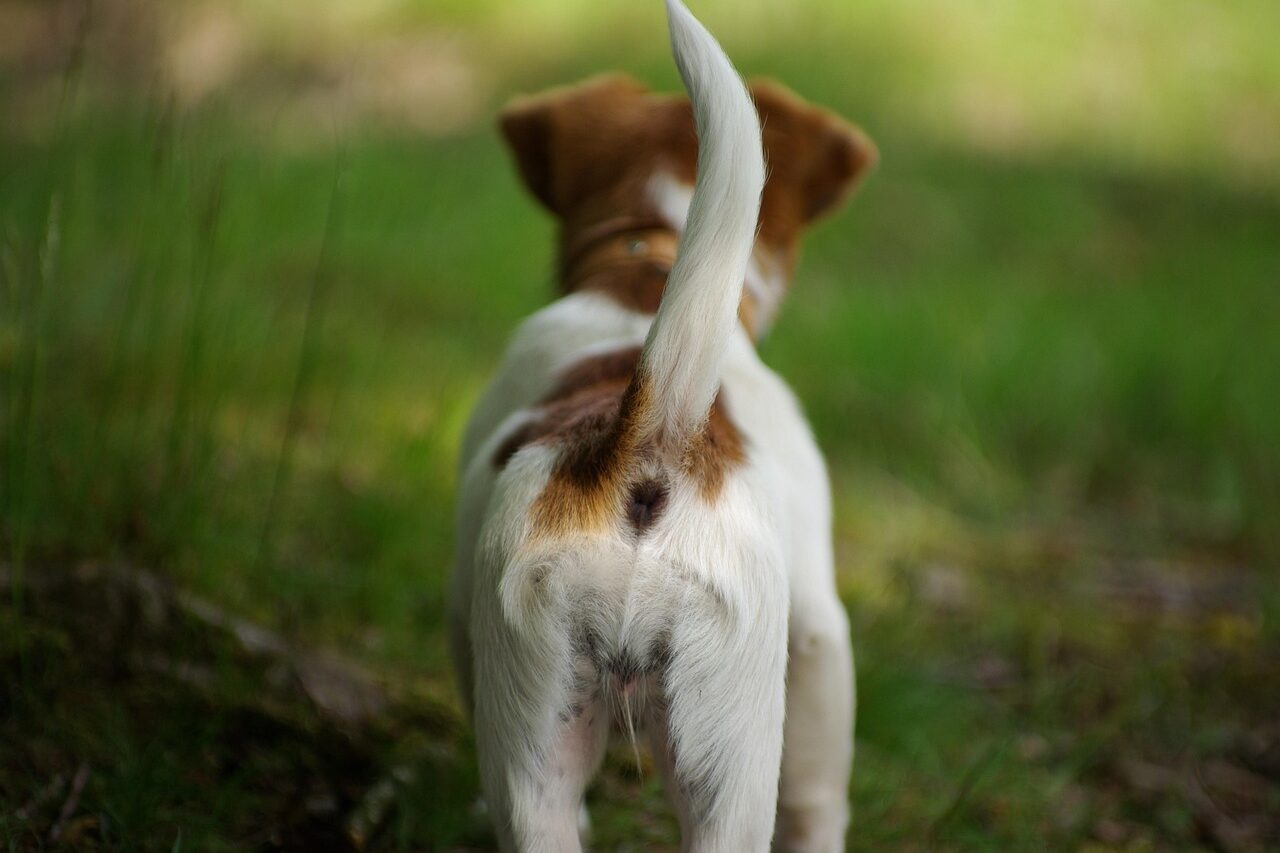
A dog that holds its tail straight up, stiff as a rod, without any wagging is in a state of high alert. This is a serious posture that signals intense focus, and it often means the dog is evaluating something it perceives as unusual or potentially threatening. Dogs in this state are hyper-aware of their surroundings and are likely assessing their next move. This behavior is frequently seen in working breeds like German Shepherds, Belgian Malinois, and Rottweilers when they are guarding or on duty. Even in family pets, this stiff, upright tail is an instinctive response to anything that seems unfamiliar—whether it’s a strange dog approaching, a sudden noise, or even an unfamiliar guest in the home.
However, this position can escalate into aggression if the situation continues to trigger the dog’s instincts. When a dog is feeling threatened or challenged, a rigid, upright tail often comes with additional warning signs like raised hackles (the fur along their spine standing up), tense muscles, and intense staring. If the dog feels further provoked, this could lead to barking, lunging, or even biting. This is why it’s crucial to recognize this body language early. If you see a dog with a high, stiff tail staring at something intently, avoid making sudden movements, speaking loudly, or forcing interaction. Instead, allow the dog time to process the situation and de-escalate naturally.
7. A Low, Loose Wag Suggests Submission and Friendlyness
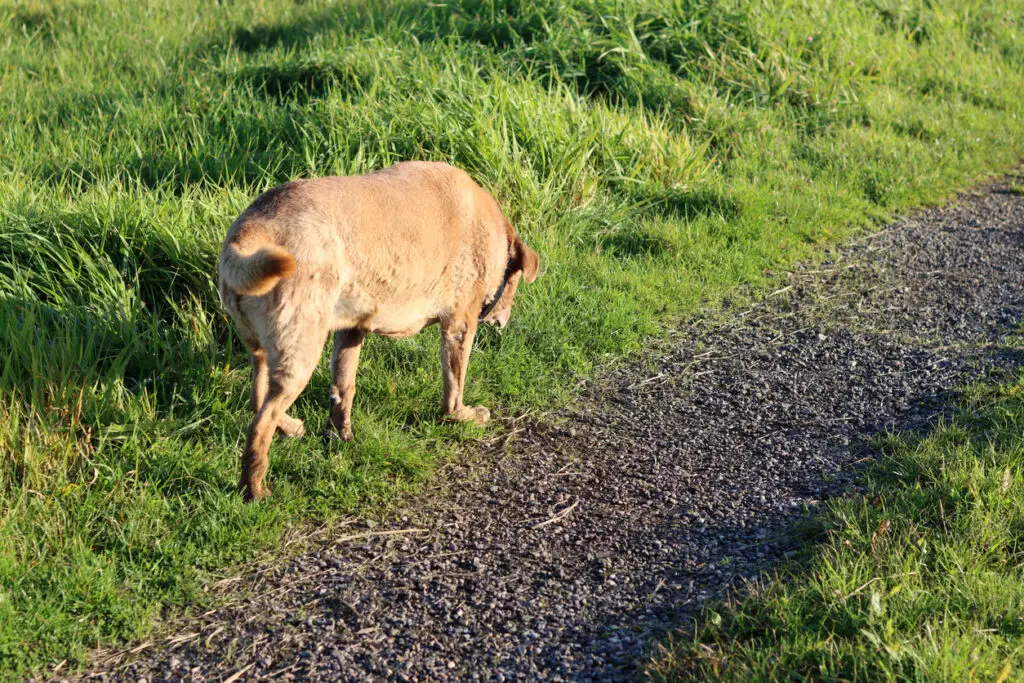
A dog that holds its tail lower than its natural position but wags it in a slow, relaxed manner is showing a combination of submission and friendliness. This type of tailwag is common when a dog is trying to appear non-threatening, either to a more dominant dog or to a person they are still unsure about, according to PetMD. It’s essentially a dog’s way of saying, “I come in peace, but I’m not entirely confident yet.” You might see this in rescue dogs who are adjusting to a new home or in puppies meeting an older, more dominant dog for the first time.
The key to understanding this behavior is looking at the rest of the dog’s body language. If their ears are slightly pulled back, their body posture is soft, and they’re gently approaching with a curved, wiggling motion, this is a friendly dog that just needs a little reassurance. However, if their tail is low but their body is stiff and they are avoiding eye contact or licking their lips excessively, they may be feeling nervous or overwhelmed. The best approach is to let the dog set the pace—if they want attention, they’ll move closer, and if they need space, they should be allowed to retreat without pressure.
8. A Fast, High Wag Combined with Excitable Movement Means Overstimulation

A dog that is wagging its tail high and rapidly while moving erratically is experiencing overstimulation. This is often mistaken for simple excitement, but in reality, it’s a state where the dog’s energy is so high that they may struggle to control themselves. You’ll frequently see this in young, energetic dogs, especially during rough play or when they anticipate something exciting, like mealtime or a walk.
While this behavior is usually harmless, it can sometimes lead to overly enthusiastic reactions, like jumping on people, excessive barking, or even rough play that includes nipping. In extreme cases, a dog that gets too overstimulated can become reactive, snapping or growling out of sheer excitement rather than aggression. If you notice your dog reaching this level of energy, it’s best to redirect them into a structured activity like fetch or obedience training to bring their focus back to a controlled state. Managing overstimulation early helps prevent hyperactive behaviors from turning into frustration or unwanted aggression.
9. A Tail That Wags Only Slightly to One Side Can Indicate Unease

Dogs don’t always wag their tails symmetrically, and subtle differences in their wagging direction can reveal a lot about their emotions. Research has shown that dogs tend to wag more to the right when they feel happy and relaxed and more to the left when they are experiencing stress, uncertainty, or even mild fear. If a dog’s tail is moving slightly to one side, especially in a hesitant manner, they may be feeling conflicted about the situation.
For example, if a dog meets a new person and wags slightly to the left, they are likely unsure whether they should trust them yet. Similarly, if a dog sees another dog and their tail wags unevenly, they are still evaluating whether the interaction will be positive or confrontational. According to Dogster, as a pet owner, paying attention to these subtle cues can help you recognize when your dog needs extra reassurance or space. If their tail starts wagging more freely and symmetrically after a few moments, it means they are feeling more comfortable.
10. A Wagging Tail That Suddenly Stops Can Signal a Change in Mood
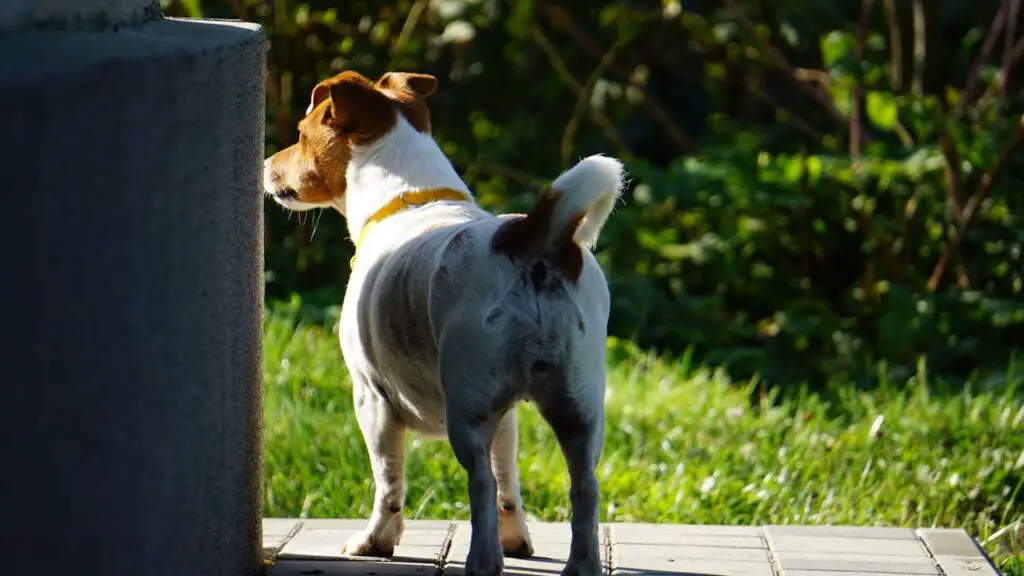
Dogs rarely stop wagging their tails mid-motion unless something shifts in their mental state. A tail that was happily wagging one moment and then suddenly freezes could indicate that the dog has noticed something important—perhaps a new sound, movement, or smell that requires their immediate focus. This transition often signals that the dog is switching from a relaxed state to a more alert or cautious one.
For example, imagine a dog greeting its owner joyfully, tail wagging wildly, when suddenly a loud noise from outside interrupts them. If their tail stops abruptly and their body stiffens, they’ve shifted into an alert mode, processing whether the noise is a threat. If the situation continues to feel safe, they may resume wagging, but if their alertness turns into anxiety, their tail might lower, or they may retreat. This kind of sudden tail shift is an important sign for owners—it means something has caught the dog’s attention and that their emotional state is actively changing.
Click here for more stories like this
11. A Dog That Wags While Holding Its Tail Between Its Legs Is Nervous but Trying to Engage
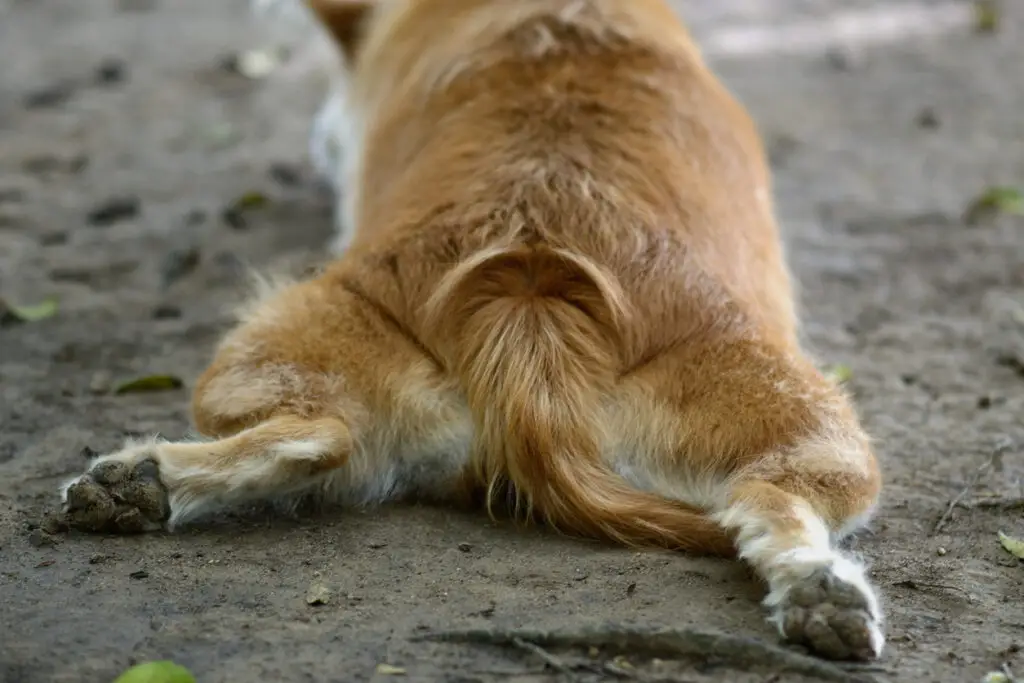
A tail tucked between a dog’s legs is a classic sign of fear or submission, but if the dog is wagging it at the same time, this indicates conflicting emotions. The dog is nervous but also wants to engage in some way, whether that means interacting with a person, another dog, or an unfamiliar situation. This behavior is often seen in dogs that have had negative past experiences or those that are naturally shy and unsure how to approach new interactions.
A great example of this is a rescue dog that has been adopted into a new home. They might want to be friendly but are still carrying some fear from their past. They’ll wag their tail tentatively while keeping it tucked close to their body, signaling a mixture of interest and apprehension. If you see this in your dog, it’s best to respond calmly—using a soft voice, avoiding direct staring, and letting them approach at their own pace. Over time, as they build trust, the tail will gradually move into a more natural, relaxed position.
12. A Tail That Is Held High and Wagging Broadly Can Indicate Confidence or Assertiveness
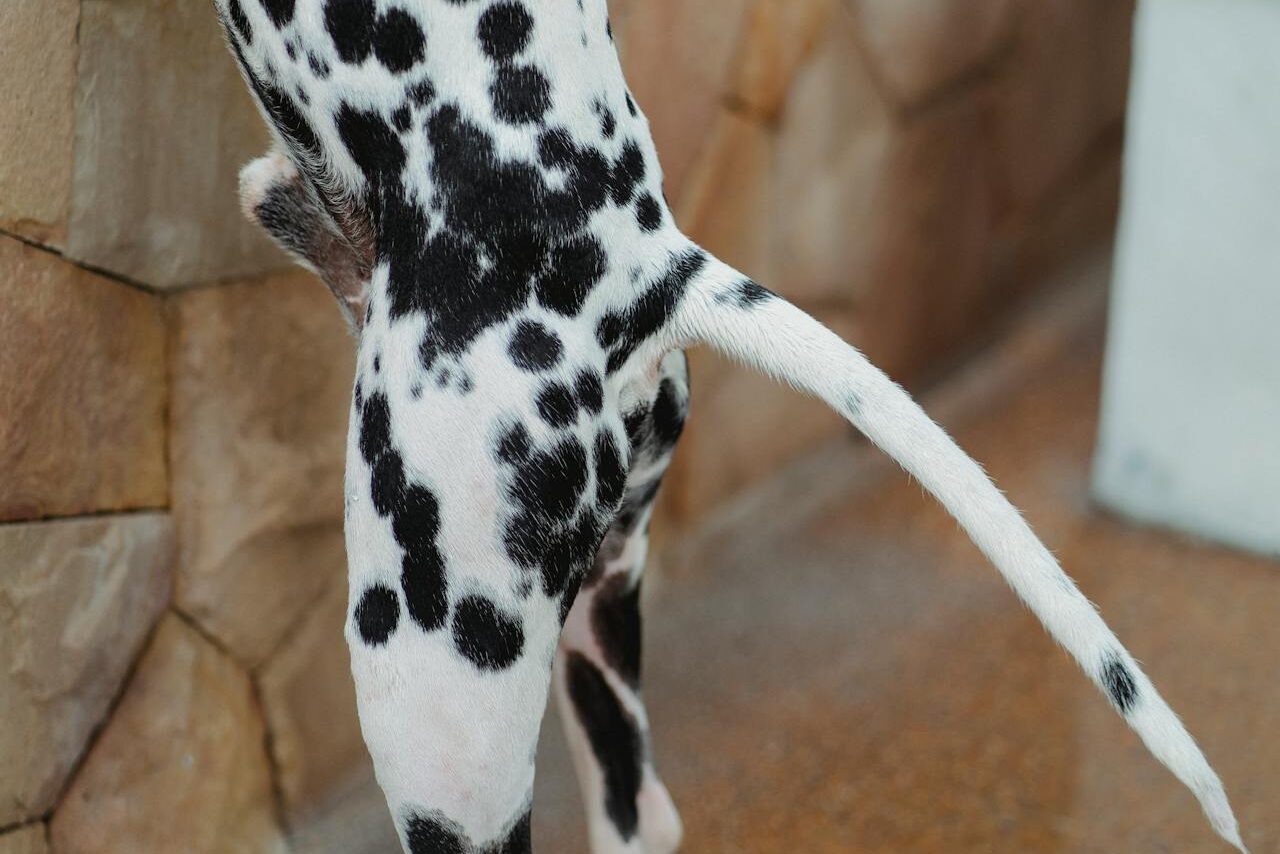
When a dog holds its tail high and wags it in broad, sweeping motions, it often means they are feeling confident, assertive, and sometimes even a little bossy. This type of tail wag is commonly seen in dominant dogs or those with strong leadership instincts, like Huskies, Akitas, or Cane Corsos. In a social setting with other dogs, this tail movement can indicate a dog that is comfortable in its surroundings and possibly asserting control over the situation. It’s not necessarily a sign of aggression, but it does mean that the dog is feeling sure of themselves and isn’t backing down.
In a human-dog interaction, a dog displaying this kind of tail movement might be feeling particularly self-assured, such as when they are playing a game they know they can win or when they expect a reward for something they’ve done. For instance, if your dog fetches a toy and prances back to you with a high, proudly wagging tail, they are showing off their success. However, in certain contexts, such as meeting an unfamiliar dog that also wants to establish dominance, this posture could lead to tension. If both dogs display high, confident wags and neither backs down, it’s best for the owners to redirect their attention before the situation escalates into a challenge.
13. A Completely Still Tail Means Extreme Focus, Fear, or Readiness to React
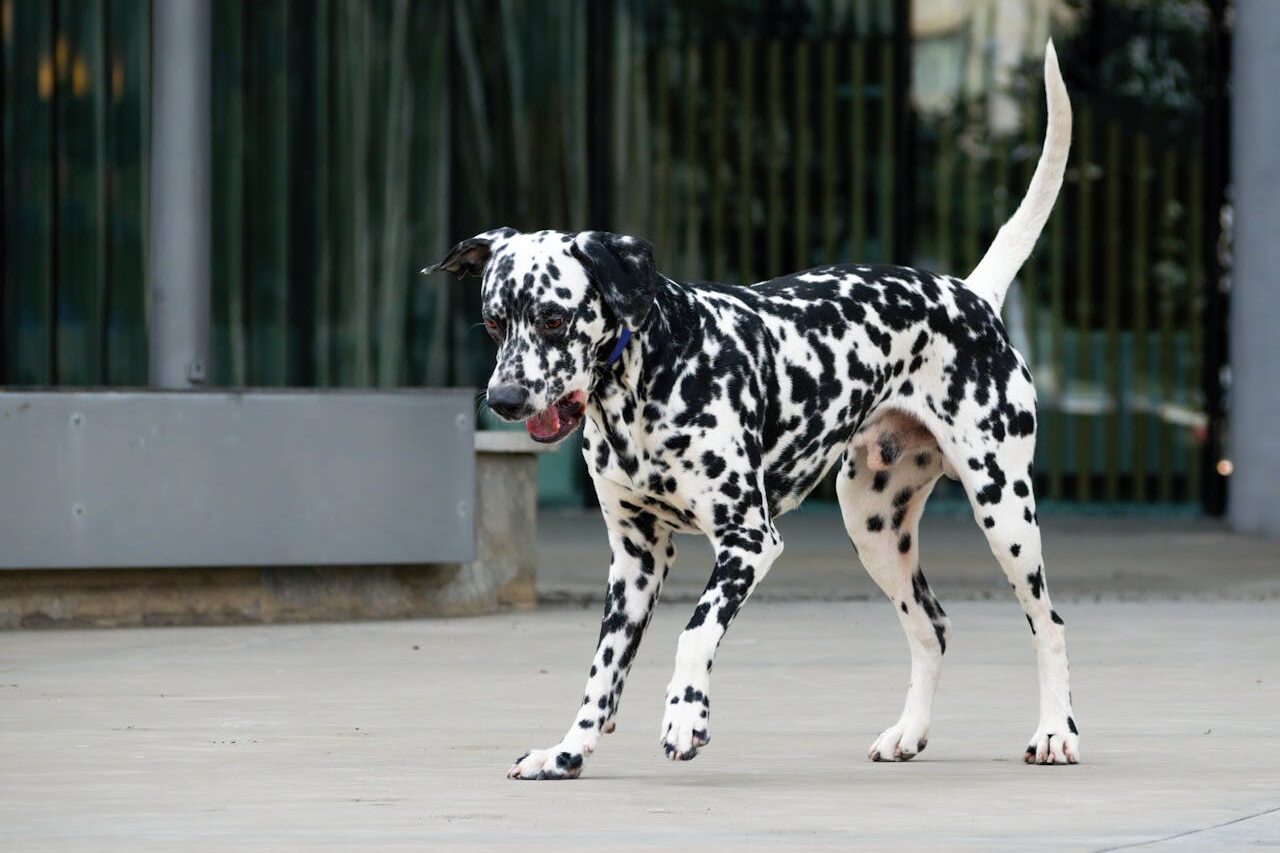
If a dog’s tail is completely still—whether it’s held high, low, or in a neutral position—it means they are intensely focused on something. This could be due to fear, deep concentration, or the readiness to spring into action. A still tail is often seen in hunting breeds like Pointers or Retrievers when they lock onto prey and in herding dogs when they are intently watching their target. It’s also a key behavior in guard dogs, who will freeze and analyze a situation before deciding how to act.
However, a motionless tail can also be a sign of fear, particularly when combined with stiff body posture, pinned-back ears, and wide eyes. If a dog suddenly stops wagging their tail and freezes, it’s a critical moment that should not be ignored. They may be feeling threatened, overwhelmed, or preparing to defend themselves. This is why it’s important to recognize when a dog’s stillness is a sign of excitement versus a warning of potential aggression. If you notice your dog in a frozen state, give them space, observe what’s making them uncomfortable, and avoid pressuring them into interaction until they have calmed down.


